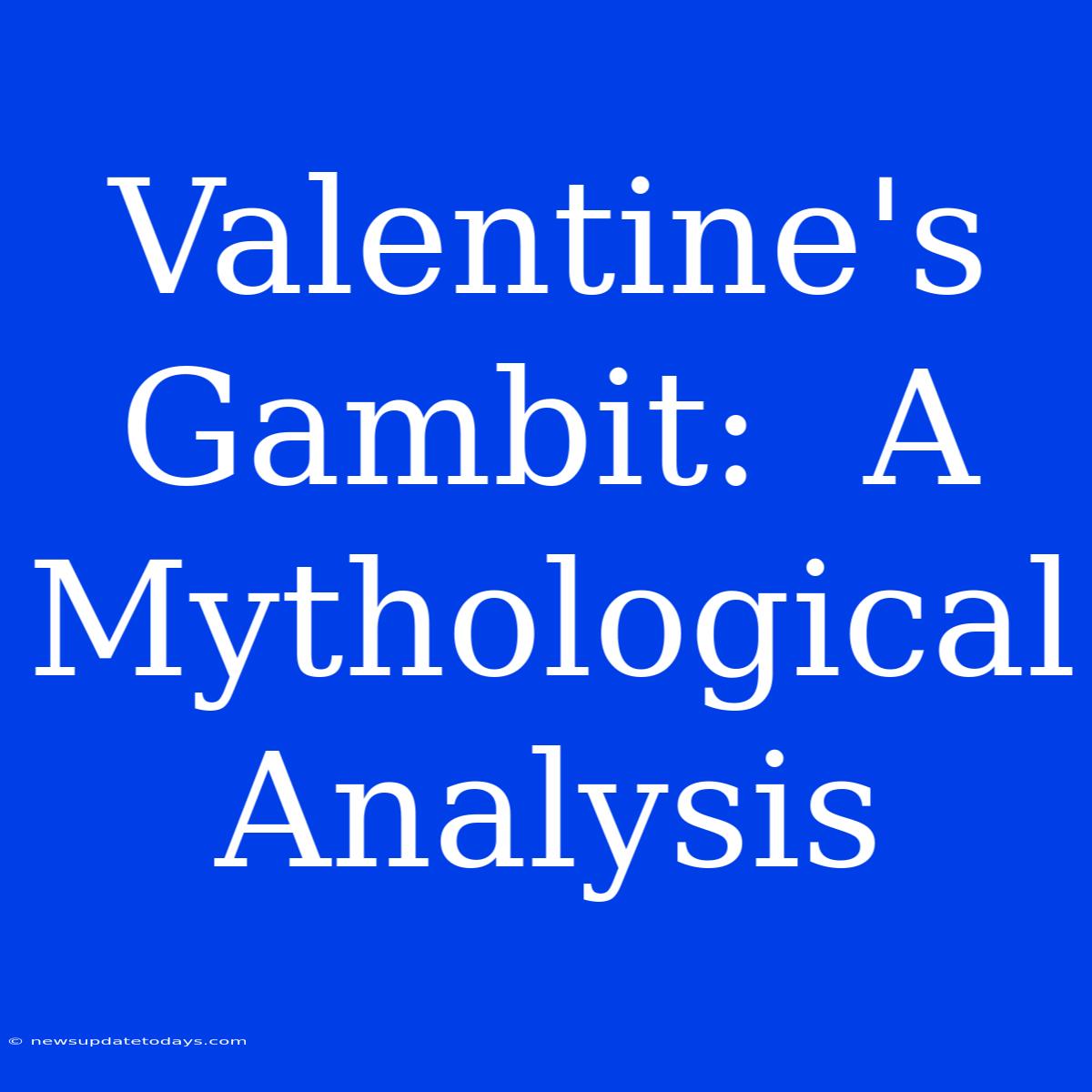Valentine's Gambit: A Mythological Analysis of Love, Loss, and Sacrifice
Valentine's Day, a celebration steeped in romance and affection, often overshadows its complex and sometimes contradictory origins. Peeling back the layers of commercialism, we find a rich tapestry woven from mythological threads – stories of love, loss, and sacrifice that resonate deeply with our modern understanding of romantic relationships. This analysis delves into the mythological underpinnings of Valentine's Day, exploring how ancient myths inform our contemporary celebrations and expectations.
The Many Faces of Love in Mythology
The very concept of Valentine's Day hinges on the idea of romantic love, a powerful and often tumultuous force explored extensively in mythology across cultures. Consider:
-
Greek Mythology: The story of Eros and Psyche embodies both the intoxicating bliss and the perilous trials of love. Their journey, filled with obstacles and betrayals, reflects the challenges inherent in any lasting relationship. The obsessive and possessive nature of some mythological loves, like Hades and Persephone, also highlights the darker side of romantic obsession.
-
Roman Mythology: Cupid, the Roman equivalent of Eros, further solidifies the link between mythology and Valentine's Day. His arrows, representing the unpredictable power of love, continue to influence our modern imagery of hearts and arrows. Furthermore, the Roman festival of Lupercalia, with its fertility rites and pairing of lovers, provides a possible historical connection to the modern celebration.
-
Celtic Mythology: While less directly linked to Valentine's Day, Celtic mythology's emphasis on the cyclical nature of life and death resonates with the themes of sacrifice and renewal often associated with love stories. The potent symbolism of trees and nature mirrors the enduring power of love, capable of blossoming even in the harshest of conditions.
The Sacrifice of Love: A Recurring Theme
Many mythological narratives emphasize sacrifice as a crucial component of love. The willingness to endure hardship, overcome obstacles, or even give one's life for a loved one is a recurring theme. This selflessness echoes in the modern Valentine's Day tradition of gift-giving, acts of service, and declarations of affection – subtle forms of sacrifice in our contemporary world.
The Shadow Side of Love: Mythological Warnings
It's crucial to acknowledge that mythology doesn't always portray love in a rosy light. Many myths caution against obsession, possessiveness, and the dangers of unchecked passion. The stories serve as reminders that love, while powerful and transformative, can also be destructive if not tempered with reason and respect. This darker aspect of love is often overlooked in modern Valentine's Day celebrations, yet it provides valuable context for navigating the complexities of romantic relationships.
Reinterpreting Valentine's Day: A Mythological Lens
By examining Valentine's Day through a mythological lens, we gain a deeper appreciation for its rich history and its enduring cultural significance. The myths offer not only romantic ideals but also cautionary tales, reminding us that love is a multifaceted experience with both light and shadow. Rather than simply embracing the commercialized aspects of the holiday, understanding its mythological underpinnings allows for a more thoughtful and nuanced appreciation of love in all its forms. This understanding can enhance our personal relationships and enrich our understanding of human connection, moving beyond superficial gestures to embrace the true depth and complexity of love itself.

